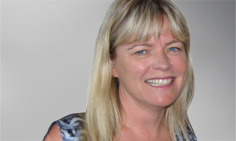AUSTRALIANS had a crash course on food last week: food safety, global food networks, the transmission of foodborne diseases and how authorities manage risk and ensure continuous, affordable food supply.
On Valentine’s Day, Food Standards Australia announced that an Australian distributor had recalled frozen berry products that originated in China due to potential hepatitis A contamination.
By last Thursday 13 cases of hepatitis A in four states had been linked to the berries.
The outbreak has had far reaching implications. Blood donors have now begun to contact the Red Cross to report that they had consumed the berries, and parents of children at schools and childcare centres have been notified of potential risks. The Chief Medical Officer, Professor Chris Baggoley, told the ABC that it would take 7 weeks to know the extent of the outbreak, estimating that up to one in 100 people who consumed contaminated berries could be affected.
Inevitably, there have been criticisms of the screening procedures for imported foods and calls for more stringent measures. While it might emerge that more could have been done locally, it is unsurprising that the problem was not detected.
Fruit is generally not classified by the Department of Agriculture as a “risk food” and is not comprehensively tested for microorganisms. If growers and distributors fail to prevent or detect contamination it can slip through the importation cracks. The small risk, when balanced against limited resources, delays and expense, is mostly unavoidable.
In medicine we go to great lengths to determine and quantify risk. I was reminded of this by a comment from an expert quoted in one of MJA InSight news stories this week.
In discussing the options for women who have prolonged, troublesome menopausal symptoms, Professor Martha Hickey welcomed the findings of a recent study published in The Lancet that found an increased risk of ovarian cancer in women who had had hormone therapy. She said: “The more high-quality information we have … the easier it is for women and health care providers to make informed decisions …”. The “very small increase” in this rare condition was something that women and their doctors should take into consideration when making such decisions.
In this case, a known risk can be liberating rather than restrictive.
Another of our news stories canvasses the pitfalls of overestimating risk. US researchers recently tested five absolute cardiovascular risk calculators against the 10-year outcomes of participants in a multi-ethnic study of atherosclerosis.
Four of the calculators, including the new American Heart Association and American College of Cardiology risk score, markedly overestimated risk, raising the prospect that their use could lead to overtreatment. US-based cardiologist, Associate Professor Scott Kinlay was not fazed by the finding, telling MJA InSight: “Risk calculators are an imperfect but pragmatic tool for clinical practice, particularly when it comes to making decisions about the patient whose risk is unclear”.
In this case, knowing the limits of our ability to estimate risk is useful information.
It will come as no surprise to clinicians that one of the skills of medicine is accepting risk, but in an increasingly litigious and risk-averse environment, it can be difficult to stay the course.
In her column this week Jane McCredie considers the possibility that publishers’ fear of litigation from commercial interests is having a “chilling effect” on the medical literature, by which medical journals fail to name products and companies that are damaging to health.
In Jane’s example it was the publisher, rather than the editor, of Pediatrics who pulled the plug on naming companies involved in the non-compliant marketing of fast food to children. As an editor I can imagine that this was a disappointing outcome.
The story illustrates that risk is surely in the eye of the beholder.
Accepting risk is part of medicine and part of life and, ironically, choosing not to accept it can be a risk in itself.
Dr Ruth Armstrong is the medical editor of MJA InSight. Find her on Twitter: @DrRuthInSight

 more_vert
more_vert
A bumper sticker slogan “if you’re not living on the edge you’re taking up too much space” once caught my attention and this article reminded me of that. We are certainly exposed to risks every day, in our daily lives, just by crossing the street or sun baking on the beach. We look left and right before we cross the street and we wear hats, sunnies and use sunscreen on the beach. Over the years we learn how to manage many risks that we encounter in our everyday lives, and we rely on information and the authorities to improve our understanding of theses risks. Globalisation and the Internet has made information more accessible to everybody, however, the same globalisation (and the Internet) has added additional risks to our everyday lives, as was illustrated by the berry business. I think the challenge will be for authorities to keep up and to become more adaptable so that they are able to keep track and respond to these risks quickly and adequately in an increasingly changing world.